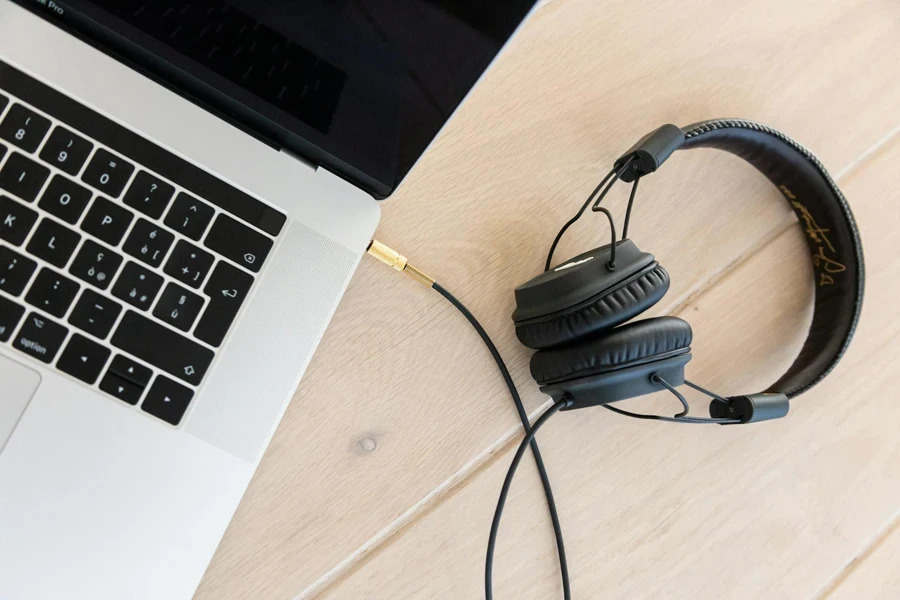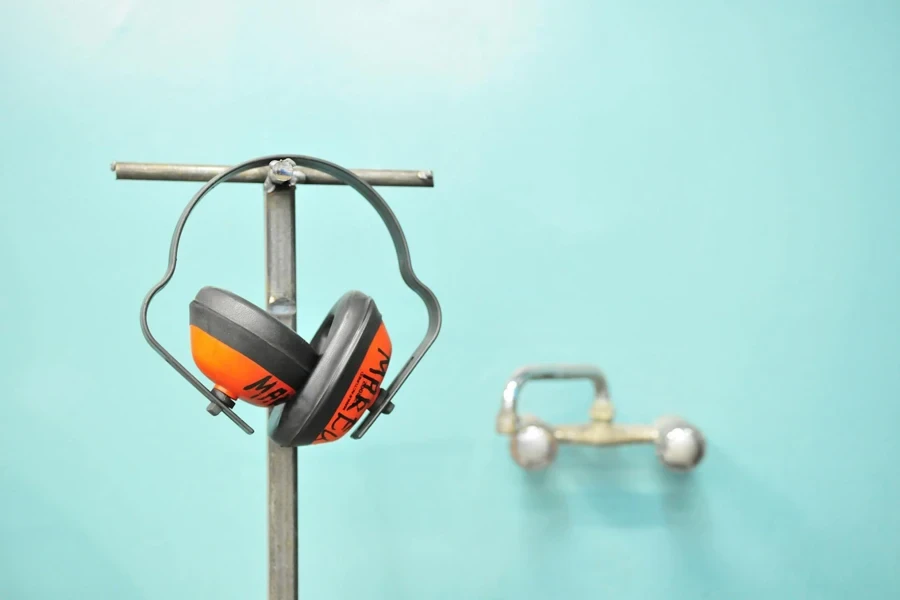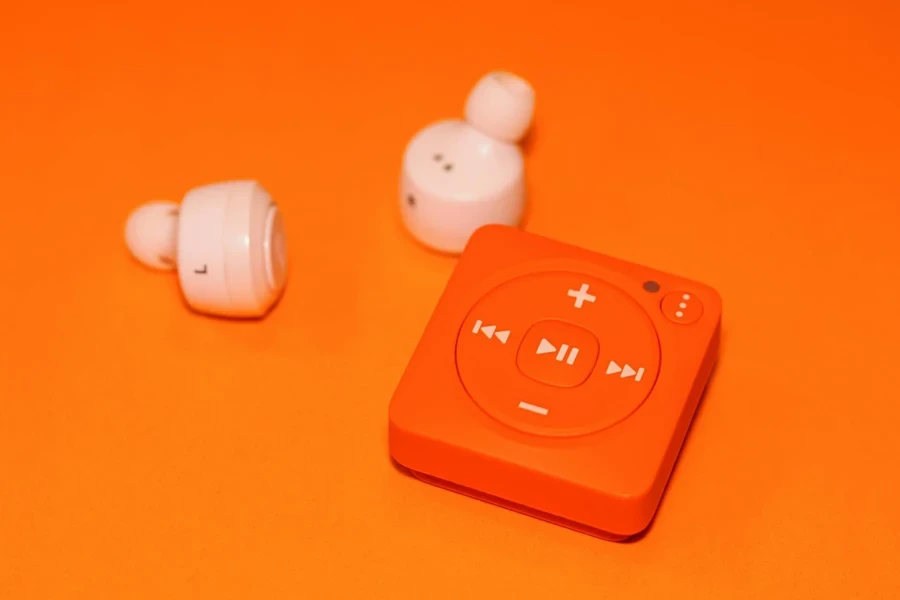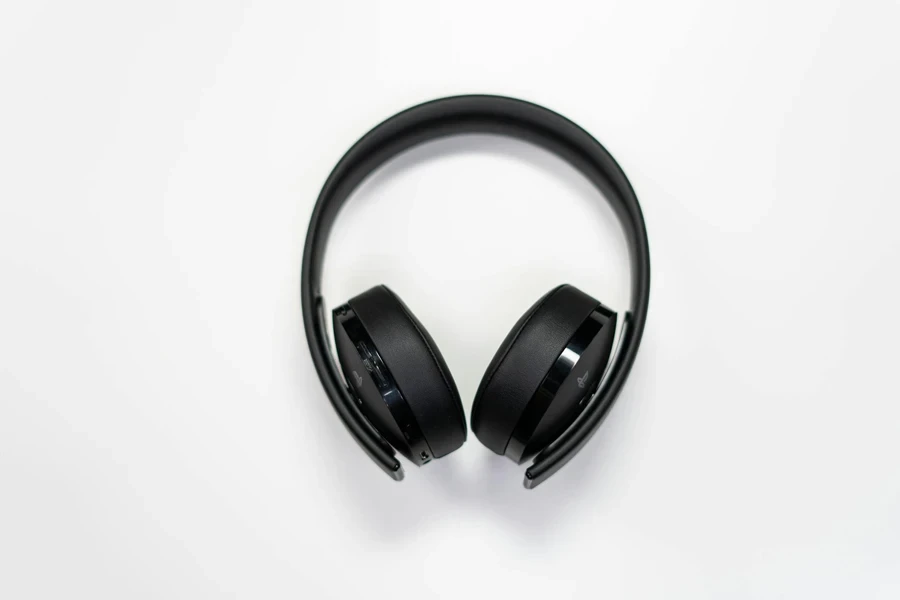Table of Contents
● Introduction
● Market overview
● Different types and their features
● Things to consider when selecting products
● Conclusion
Introduction
Earphones and headphones have become essential accessories in today’s digital age, transforming the way audio is experienced. These devices enhance everything from music and podcasts to virtual meetings and gaming sessions, providing unparalleled sound quality and convenience. With continuous advancements in technology, such as AI integration and noise-cancelling features, the market for earphones and headphones is rapidly expanding. Companies are investing heavily in research and development to cater to diverse consumer needs, driving significant growth in this sector. Understanding the various types and their features is crucial for businesses to make informed purchasing decisions in this dynamic market.
Market overview

Market scale and growth
The global earphones and headphones market was valued at approximately USD 57.12 billion in 2022 and is projected to reach around USD 149.98 billion by 2030, with a compound annual growth rate (CAGR) of 12.83% from 2023 to 2030. This growth is fueled by the rising popularity of truly wireless earphones and the integration of advanced technologies such as AI, machine learning, big data analytics, and touchless sensors. The influence of celebrity endorsements and the expansion of distribution channels also contribute to the market’s expansion.
Market segmentation
In terms of market segmentation, products are categorized into in-ear, on-ear, over-ear, and earbuds. The in-ear segment held the highest market value in 2022 due to their affordability and lightweight design. Technology-wise, wireless earphones dominate the market, driven by their seamless integration with IoT devices and features like active noise cancellation. The primary applications include fitness, gaming, media and entertainment, and virtual reality, with the media and entertainment segment expected to grow the fastest. Distribution channels are split between online and offline, with online channels projected to hold the highest valuation by 2030.
Regional insights
Regionally, North America leads the market, supported by a strong community of video gamers and continuous technological advancements. The Asia-Pacific region is experiencing the fastest growth, attributed to the affordability of smartphones and increasing disposable income. The diverse consumer needs and widespread adoption of online music streaming services further propel the market in this region.
Different types and their features

Closed-back headphones
Closed-back headphones are engineered to block external noise, featuring high noise-cancelling capabilities ideal for detailed music listening. They typically use dense ear cup materials and thick padding to create a seal around the ears, preventing sound leakage. These headphones often have large drivers, ranging from 40mm to 50mm, delivering powerful bass and precise audio. However, their bulky design can cause discomfort during extended use, making them better suited for stationary activities like studio recording or critical listening sessions.
Open-back headphones
Open-back headphones are designed with perforated ear cups that allow air and sound to pass through. This design reduces resonance and delivers a more natural, spacious sound, often described as having a “flat” frequency response, which is essential for audio engineers and studio work. They typically use high-impedance drivers, around 250 ohms or more, requiring a robust amplifier to drive them effectively. Despite their superior sound quality and comfort, the open-back design makes them less suitable for noisy environments due to sound leakage.
On-ear headphones
On-ear headphones rest directly on the ears and offer a balance between portability and sound quality. They often use smaller drivers, typically around 30mm to 40mm, which provide decent audio fidelity while keeping the overall weight down. On-ear models frequently incorporate lightweight materials and foldable designs for enhanced portability. However, the pressure on the ears can lead to discomfort during long listening sessions, and their open design can result in sound leakage.
Over-ear headphones
Over-ear headphones encompass the entire ear, providing superior noise isolation and immersive sound quality. These headphones usually feature large drivers, from 40mm to 60mm, capable of delivering a wide frequency range from 20Hz to 20kHz or beyond, ensuring deep bass and clear highs. High-end models often include materials like memory foam and leather for ear pads, enhancing comfort during prolonged use. Advanced models may also incorporate planar magnetic drivers, offering low distortion and high resolution, making them ideal for audiophiles.
In-ear wired earphones
In-ear wired earphones are compact and deliver precise sound directly into the ear canal, offering good isolation from external noise. They often use balanced armature drivers or dynamic drivers, with diameters ranging from 8mm to 12mm, to provide accurate sound reproduction. Some high-end models feature multiple drivers per earbud to handle different frequency ranges separately, enhancing audio clarity. These earphones are favored for their low latency and lightweight design, making them ideal for gaming and mobile use.
Wireless earbuds
Wireless earbuds are highly portable and often come with features like Bluetooth 5.0 or higher, providing stable connectivity and reduced latency. They incorporate small dynamic drivers, around 6mm to 10mm, to fit within the compact earbud housing while still delivering robust sound quality. Many models include advanced features like active noise cancellation (ANC), touch controls, and voice assistant integration. The battery life varies, typically offering 4 to 8 hours of playback per charge, with charging cases providing additional charges for extended use.
Bluetooth headphones
Bluetooth headphones offer the convenience of wireless connectivity, utilizing Bluetooth 5.0 or higher for improved range and lower latency. They often feature advanced codecs such as aptX, AAC, and LDAC, enhancing audio quality over wireless connections. These headphones generally house large dynamic drivers, around 40mm to 50mm, ensuring rich sound quality. They also include features like ANC, long battery life ranging from 20 to 40 hours, and quick-charging capabilities, making them suitable for a variety of activities from commuting to workouts.
Noise-cancelling headphones
Noise-cancelling headphones use advanced technology to eliminate external noise, featuring both passive and active noise-cancelling (ANC) mechanisms. ANC systems employ microphones and electronic circuitry to generate sound waves that counteract external noises. These headphones typically use high-capacity lithium-ion batteries, offering 20 to 40 hours of playback with ANC activated. High-end models may include multiple ANC modes tailored for different environments, such as travel, office, or outdoor settings. The combination of large dynamic or planar magnetic drivers ensures high-fidelity sound reproduction, making them ideal for users in noisy environments who demand high audio quality.
Things to consider when selecting products

Type of headphones
Choosing the right type of headphones depends on the specific needs. In-ear headphones, or earbuds, are compact and fit snugly into the ear canal, making them ideal for activities like running or commuting. They typically feature small dynamic drivers, ranging from 6mm to 10mm, delivering good sound quality despite their size. Over-ear headphones, with larger drivers between 40mm to 50mm, provide superior sound quality and noise isolation, suitable for audiophiles and professionals. These headphones can also feature planar magnetic drivers, offering low distortion and high audio fidelity.
Wired vs wireless
Wired headphones offer an uninterrupted audio signal and do not require charging, making them reliable for long-term use. They often come with higher impedance levels, around 32 ohms or higher, providing better sound quality with dedicated audio equipment. Wireless headphones, utilizing Bluetooth 5.0 or higher, provide freedom of movement and convenience, especially with codecs like aptX, AAC, and LDAC that ensure good quality audio transmission. However, they need to be charged regularly, with battery life typically ranging from 20 to 40 hours.
Sound quality
Sound quality in headphones is determined by several key specifications. Frequency response, typically 20Hz to 20kHz, indicates the range of sounds the headphones can reproduce. Impedance, measured in ohms, affects how much power is needed to drive the headphones; lower impedance (under 25 ohms) is suitable for portable devices, while higher impedance (over 50 ohms) is better for professional audio equipment. Sensitivity, measured in dB/mW, indicates how loud the headphones can get; a higher sensitivity (above 100 dB) means louder sound. Driver size, with larger drivers (40mm to 50mm) generally producing better bass response, is crucial for overall sound quality.
Noise isolation vs active noise cancelling
Noise isolation relies on the physical design to block out ambient noise, using materials like memory foam in the ear pads to create a seal around the ears. Active noise cancelling (ANC) headphones use built-in microphones and electronic circuitry to produce sound waves that counteract external noise. Advanced ANC headphones can adjust the level of noise cancellation based on the environment, using adaptive algorithms and multiple microphones. ANC typically requires more power, affecting battery life, but significantly enhances the listening experience in noisy environments.
Battery life and charging speed
For wireless headphones, battery life is a critical factor. Modern models can offer up to 40 hours of playback on a single charge. Quick charging capabilities are also important; some headphones can provide several hours of use from just a 5-minute charge, thanks to technologies like USB-C fast charging. Additionally, the efficiency of the battery management system can impact overall performance and longevity.
Waterproofing
Waterproof headphones are essential for active users. The Ingress Protection (IP) rating indicates the level of water resistance; for example, an IPX7 rating means the headphones can be submerged in water up to 1 meter deep for 30 minutes. This feature is crucial for users who exercise outdoors or in varying weather conditions. It’s important to note that while waterproof headphones can handle sweat and rain, not all are designed for swimming.
Comfort level
Comfort is determined by the design and materials used in the headphones. Memory foam ear pads adapt to the shape of the ears, providing a custom fit. Headbands should be adjustable and padded to distribute weight evenly and reduce pressure points. Lightweight materials, such as aluminum or carbon fiber, are preferred for long-term wear, as they reduce fatigue compared to heavier plastic or metal designs.
Price
Balancing cost with features and performance ensures value for money. High-end headphones may offer advanced features like adaptive noise cancelling, multiple drivers, and premium materials, but there are also budget-friendly options that provide good sound quality and comfort. Consider the key features one needs, such as sound quality, battery life, and comfort, and choose a model that fits within one’s budget while meeting their requirements.
Conclusion

Selecting the right earphones or headphones is crucial for enhancing audio experiences, tailored to specific needs and preferences. Considering factors such as type, wired versus wireless, sound quality, noise isolation or cancellation, battery life, waterproofing, comfort, and price ensures informed decisions. By evaluating these aspects carefully, businesses can choose products that deliver superior performance and satisfaction, aligning with their users’ demands and environments.




